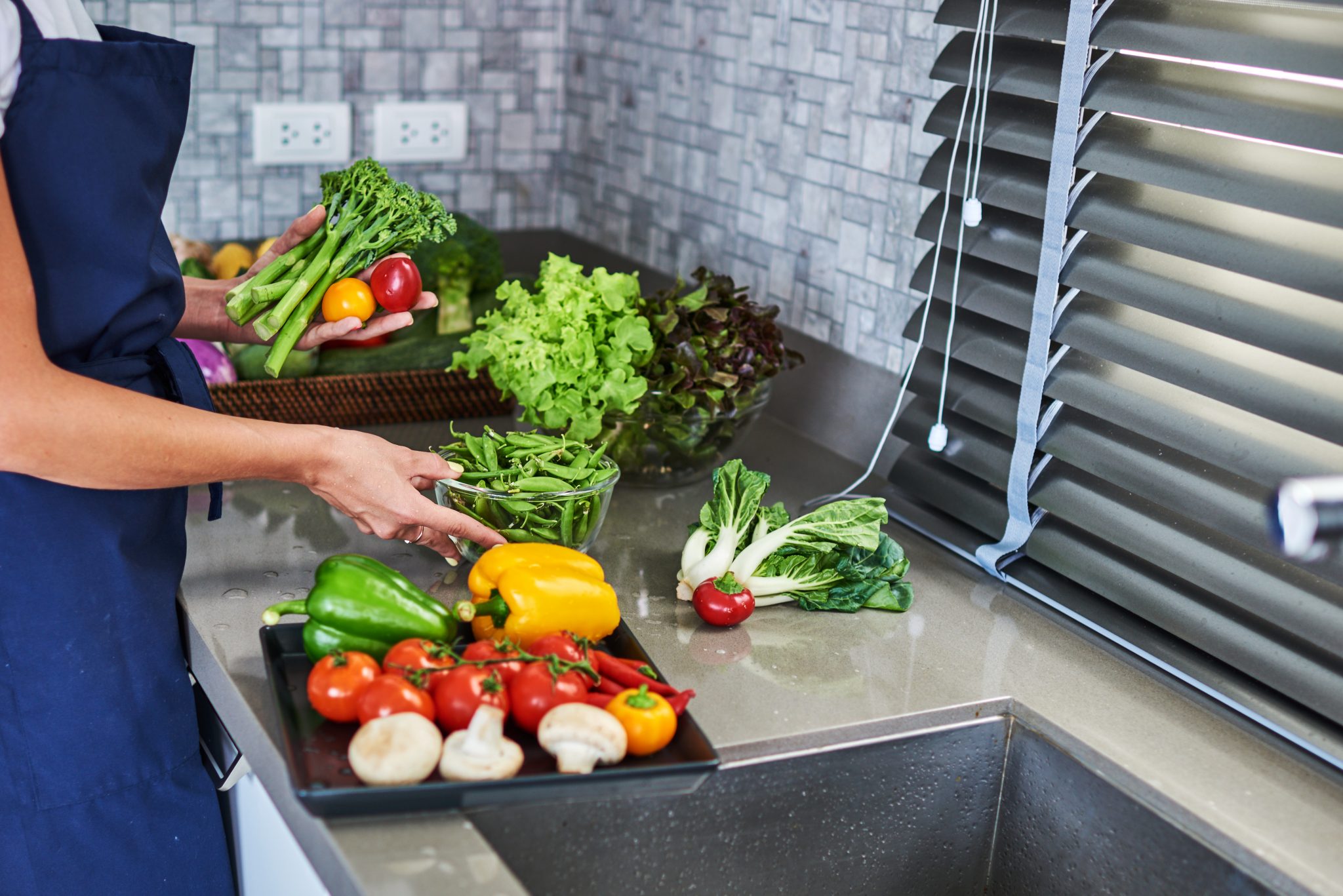Home & Family

Incorporating more fruits and vegetables into a diet is a great way for people to reduce their calorie intake. Fruits and vegetables, ideally those that contain the highest amounts of potassium, vitamins A and C, and a host of phytochemicals that enhance immune functions, are good alternatives to processed foods.
Plan Ahead
People should think ahead of time about how to add more fruits and vegetables when they are planning snacks, meals, and desserts. There are several convenient ways that people can add more fruits and vegetables to their diets. People should surround themselves with these nutritious foods in the forms they like the most. This may come by adding a favorite apple variety to the lunch box or adding an additional vegetable pizza toppings at dinner.
While fresh fruits and vegetables are good choices, frozen and canned options are good, convenient choices too. However, canned vegetables are less desirable because of their high sodium content. To counteract this, some of the sodium can be rinsed off the vegetables before cooking. Always read the nutrition label to see how many milligrams of sodium are in one serving. People should aim to consume less than 2300 milligrams of sodium per day. When canned fruits are the only option, use products in natural juices or water rather than syrup, which contains added sugar.
What Foods to Add
When adding vegetables, try to select options that are packed with important nutrients. An excellent nutritional option are green, leafy vegetables. Instead of choosing the nutritionally lacking iceberg lettuce in salads, opt for greener salads with spinach, kale, and romaine lettuce. Other nutrient-rich vegetable selections include red, yellow, and green bell peppers. All of these are readily available at supermarkets. Nutritionists continue to identify a growing number of other foods that optimize health and reduce the risk of chronic, often life-threatening disease.
The following are examples of foods rich in healthy benefits and readily available in most grocery stores:
- Beets. A rich source of folate and presumed cancer fighter.
- Cabbage. Abundant in sulforaphane believed to enhance cancer-fighting properties.
- Canned pumpkin. Rich in fiber and immune-boosting vitamin A.
- Cinnamon. Possibly beneficial for maintaining healthy blood pressure and blood glucose.
- Dried plums. Prunes by another name and a treasure trove of antioxidants.
- Frozen blueberries. Loaded with antioxidants and believed to enhance memory.
- Pomegranates. Also, potentially effective in supporting healthy blood pressure and loaded in antioxidants.
- Pumpkin seeds. Loaded with magnesium and presumed to promote heart health and longevity.
- Salmon. Rich in omega-3 fatty acids, iron, magnesium, phosphorus, and several other minerals.
- Swiss chard. A green leafy vegetable chock-full of eye-protecting carotenoids.
- Turmeric. Contains anti-inflammatory and cancer-fighting properties.
Other good nutritional sources are the cabbage family of vegetables—kale, broccoli, cauliflower, and Brussels sprouts. These are rich in phytonutrients that help lower inflammation. Wheat germ found in whole wheat products is another nutritious food option readily available in a concentrate that can be added to cereals, casseroles, and other foods.
Another good food choice is nuts including almonds, walnuts, peanuts, and pecans. Remember, while nuts are rich in healthy monounsaturated fats, they are high in calories. A few traditionally Southern foods worth considering are sweet potatoes, watermelon, and collard greens. If prepared in a healthy way, these foods can be excellent additions to a nutritious diet.

